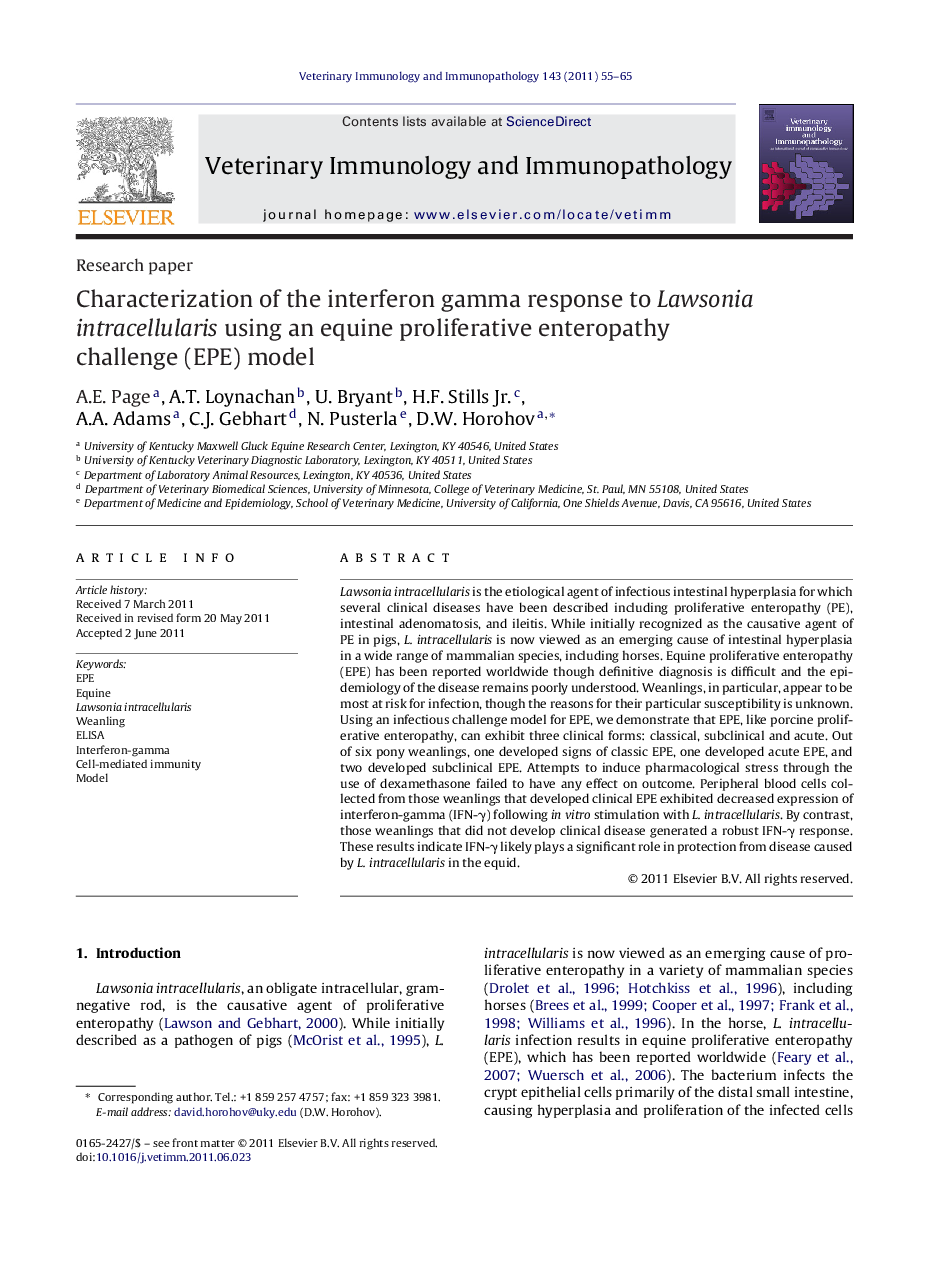| Article ID | Journal | Published Year | Pages | File Type |
|---|---|---|---|---|
| 2462132 | Veterinary Immunology and Immunopathology | 2011 | 11 Pages |
Lawsonia intracellularis is the etiological agent of infectious intestinal hyperplasia for which several clinical diseases have been described including proliferative enteropathy (PE), intestinal adenomatosis, and ileitis. While initially recognized as the causative agent of PE in pigs, L. intracellularis is now viewed as an emerging cause of intestinal hyperplasia in a wide range of mammalian species, including horses. Equine proliferative enteropathy (EPE) has been reported worldwide though definitive diagnosis is difficult and the epidemiology of the disease remains poorly understood. Weanlings, in particular, appear to be most at risk for infection, though the reasons for their particular susceptibility is unknown. Using an infectious challenge model for EPE, we demonstrate that EPE, like porcine proliferative enteropathy, can exhibit three clinical forms: classical, subclinical and acute. Out of six pony weanlings, one developed signs of classic EPE, one developed acute EPE, and two developed subclinical EPE. Attempts to induce pharmacological stress through the use of dexamethasone failed to have any effect on outcome. Peripheral blood cells collected from those weanlings that developed clinical EPE exhibited decreased expression of interferon-gamma (IFN-γ) following in vitro stimulation with L. intracellularis. By contrast, those weanlings that did not develop clinical disease generated a robust IFN-γ response. These results indicate IFN-γ likely plays a significant role in protection from disease caused by L. intracellularis in the equid.
